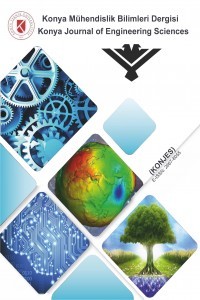OPTIMAL LOCATION OF ACTION POTENTIAL GENERATION BASED ON ACTIVATION FUNCTION USING COMPUTATIONAL MODELLING
OPTIMAL LOCATION OF ACTION POTENTIAL GENERATION BASED ON ACTIVATION FUNCTION USING COMPUTATIONAL MODELLING
___
- N. Ravichandran, M. Y. Teo, K. Aw, and A. McDaid, “Design of Transcutaneous Stimulation Electrodes for Wearable Neuroprostheses,” IEEE Transactions on Neural Systems and Rehabilitation Engineering, vol. 28, no. 7, pp. 1651–1660, Jul. 2020, doi: 10.1109/TNSRE.2020.2994900.
- B. A. Karamian et al., “The role of electrical stimulation for rehabilitation and regeneration after spinal cord injury,” Journal of Orthopaedics and Traumatology, vol. 23, no. 1. Springer Science and Business Media Deutschland GmbH, Dec. 01, 2022. doi: 10.1186/s10195-021-00623-6.
- A. Gupta, N. Vardalakis, and F. B. Wagner, “Neuroprosthetics: from sensorimotor to cognitive disorders,” Communications biology, vol. 6, no. 1. NLM (Medline), p. 14, Dec. 01, 2023. doi: 10.1038/s42003-022-04390-w.
- E. Salkim, A. Shiraz, and A. Demosthenous, “Impact of neuroanatomical variations and electrode orientation on stimulus current in a device for migraine: A computational study,” J Neural Eng, vol. 17, no. 1, 2020, doi: 10.1088/1741-2552/ab3d94.
- E. Salkim, A. Shiraz, and A. Demosthenous, “Influence of cellular structures of skin on fiber activation thresholds and computation cost In fl uence of cellular structures of skin on fi ber activation thresholds and computation cost,” Biomed Phys Eng Express, vol. 5, no. 1, p. 015015, 2018.
- S. Joucla, A. Glière, and B. Yvert, “Current approaches to model extracellular electrical neural microstimulation,” Front Comput Neurosci, vol. 8, no. February, pp. 1–12, 2014, doi: 10.3389/fncom.2014.00013.
- S. F. Cogan, “Neural Stimulation and Recording Electrodes,” Annu Rev Biomed Eng, vol. 10, no. 1, pp. 275–309, 2008, doi: 10.1146/annurev.bioeng.10.061807.160518.
- A. Kuhn, T. Keller, M. Lawrence, and M. Morari, “The influence of electrode size on selectivity and comfort in transcutaneous electrical stimulation of the forearm,” IEEE Transactions on Neural Systems and Rehabilitation Engineering, vol. 18, no. 3, pp. 255–262, Jun. 2010, doi: 10.1109/TNSRE.2009.2039807.
- A. Patriciu, K. Yoshida, J. J. Struijk, T. P. DeMonte, M. L. G. Joy, and H. Stoødkilde-Joørgensen, “Current density imaging and electrically induced skin burns under surface electrodes,” IEEE Trans Biomed Eng, vol. 52, no. 12, pp. 2024–2031, Dec. 2005, doi: 10.1109/TBME.2005.857677.
- D. Magis, S. Sava, T. S. d’Elia, R. Baschi, and J. Schoenen, “Safety and patients’ satisfaction of transcutaneous supraorbital neurostimulation (tSNS) with the Cefaly® device in headache treatment: a survey of 2,313 headache sufferers in the general population.,” J Headache Pain, vol. 14, p. 95, 2013, doi: 10.1186/1129-2377-14-95.
- J. Schoenen et al., “Migraine prevention with a supraorbital transcutaneous stimulator: A randomized controlled trial,” Neurology, vol. 80, no. 8, pp. 697–704, 2013, doi: 10.1212/WNL.0b013e3182825055.
- E. Salkim, “Electrode Array Position Guiding in Cochlea Based on Impedance Variation : Computational Study,” Muş Alparslan Üniversitesi Mühendislik Mimarlık Fakültesi Dergisi, vol. 1, no. 1, pp. 64–71, 2020.
- A. Fellner, A. Heshmat, P. Werginz, and F. Rattay, “A finite element method framework to model extracellular neural stimulation,” J Neural Eng, vol. 19, no. 2, Apr. 2022, doi: 10.1088/1741-2552/ac6060.
- F. Rattay, S. M. Danner, U. S. Hofstoetter, and K. Minassian, “Finite Element Modeling for Extracellular Stimulation,” in Encyclopedia of Computational Neuroscience, Springer New York, 2014, pp. 1–12. doi: 10.1007/978-1-4614-7320-6_593-5.
- S. Joucla and B. Yvert, “Modeling extracellular electrical neural stimulation: From basic understanding to MEA-based applications,” Journal of Physiology-Paris, vol. 106, no. 3–4, pp. 146–158, 2012, doi: 10.1016/j.jphysparis.2011.10.003.
- H. Ye, “Finding the Location of Axonal Activation by a Miniature Magnetic Coil,” Front Comput Neurosci, vol. 16, Jun. 2022, doi: 10.3389/fncom.2022.932615.
- D. N. Anderson, G. Duffley, J. Vorwerk, A. D. Dorval, and C. R. Butson, “Anodic stimulation misunderstood: Preferential activation of fiber orientations with anodic waveforms in deep brain stimulation,” J Neural Eng, vol. 16, no. 1, Feb. 2019, doi: 10.1088/1741-2552/aae590.
- K. N. Christensen, N. Lachman, W. Pawlina, and C. L. Baum, “Cutaneous Depth of the Supraorbital Nerve,” Dermatologic Surgery, vol. 40, no. 12, pp. 1342–1348, 2014, doi: 10.1097/DSS.0000000000000174.
- Y.-C. Gil, K.-J. Shin, S.-H. Lee, W.-C. Song, K.-S. Koh, and H. J. Shin, “Topography of the supraorbital nerve with reference to the lacrimal caruncle: danger zone for direct browplasty,” British Journal of Ophthalmology, vol. 101, no. 7, pp. 940–945, 2017, doi: 10.1136/bjophthalmol-2016-309332.
- “OVERVIEW » IT’IS Foundation.” https://itis.swiss/virtual-population/regional-human-models/overview/ (accessed Jan. 20, 2023).
- A. K. D. Harold Ellis, Bari M Logan, Human Sectional Anatomy, Third Edit. London: Hodder Arnold, 2009.
- M. Z. Siemionow, “The Face as a Sensory Organ,” in The Know-How of Face Transplantation, M. Siemionow, Ed., Springer, 2011, pp. 207–212. doi: 10.1007/978-0-85729-253-7.
- F. Rattay, “Analysis of models for extracellular fiber stimulation.pdf,” IEEE Trans. Biomed. Eng., vol. 36, no. 7, pp. 676–682, 1989.
- A. Fellner, A. Heshmat, P. Werginz, and F. Rattay, “A finite element method framework to model extracellular neural stimulation,” J Neural Eng, vol. 19, no. 2, Apr. 2022, doi: 10.1088/1741-2552/ac6060.
- “Low Frequency (Conductivity) » IT’IS Foundation.” https://itis.swiss/virtual-population/tissue-properties/database/low-frequency-conductivity/ (accessed May 20, 2019).
- E. Salkim, “Optimisation of a Wearable Neuromodulator for Migraine Using Computational Methods.”
- E. Salkim, “Analysis of tissue electrical properties on bio-impedance variation of upper limps”, doi: 10.3906/elk-1300-0632.3908.
- T. F. Oostendorp, J. Delbeke, and D. F. Stegeman, “The conductivity of the human skull: Results of in vivo and in vitro measurements,” IEEE Trans Biomed Eng, vol. 47, no. 11, pp. 1487–1492, Nov. 2000, doi: 10.1109/TBME.2000.880100.
- Yayıncı: Konya Teknik Üniversitesi
Cihangir KÖYCEĞİZ, Meral BÜYÜKYILDIZ
IMPROVEMENT OF HEAT AFFECTED ZONE OF GTAWed 5754 ALUMINUM ALLOY WITH FSP
Fatih KAHRAMAN, Gökçe Mehmet GENÇER, Coşkun YOLCU
Akif YAVUZSOY, Hüseyin SARGIN, Tuğçe YAREN, Selçuk KİZİR
DETERMINATION OF RESWELLING PROPERTIES AND WATER DIFFUSION MECHANISM OF HYDROGEL COMPOSITES
Mehmet YURTTADUR, Gülcihan GÜZEL KAYA, Hüseyin DEVECİ
DATA INTEGRITY AND QUALITY ANALYSIS OF LOW COST ZED-F9P U-BLOX GNSS RECEIVER
Sermet ÖĞÜTCÜ, Salih ALÇAY, Hüseyin DUMAN, Behlül Numan ÖZDEMİR, Ülkünur KORAY
Saadoon Obaid Eyada EYADA, Osman Nuri ÇELİK, Nibras Y. ABDULLA
THE EMPIRICAL STABILITY EVALUATION OF THE KÖRÜKINI CAVE, DEREBUCAK, KONYA
Ali Ferat BAYRAM, Naji ALQUBALİ
AYRI OPTİMİZASYON PROBLEMLERİ İÇİN SİMETRİ YÖNTEMLİ AYRIK BİR PARÇACIK SÜRÜSÜ ALGORİTMASI
